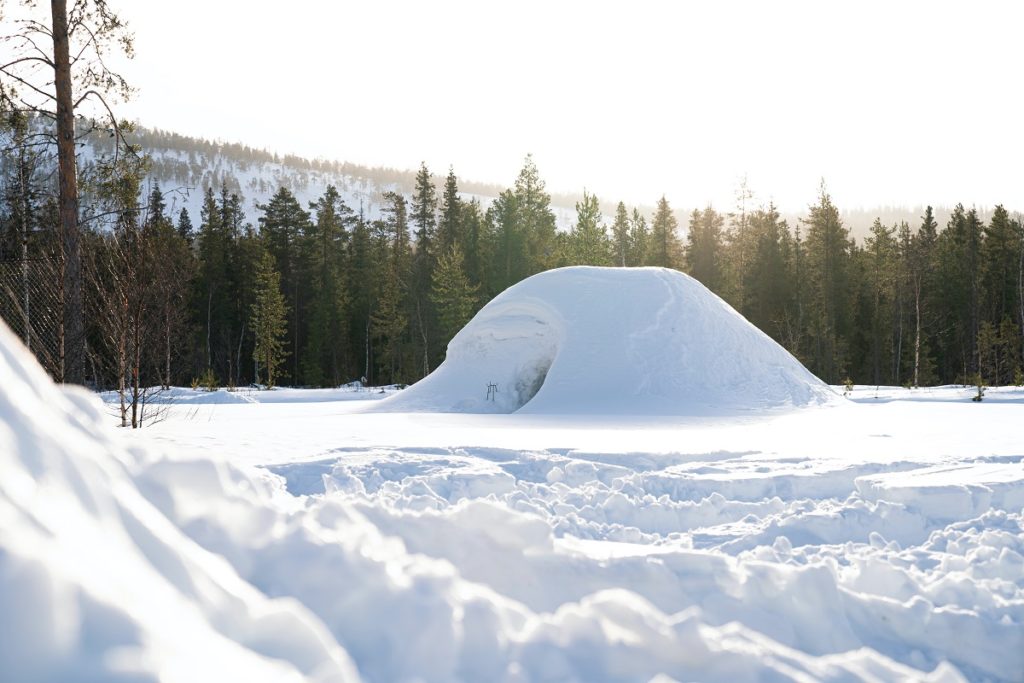When cartoons are set in cold, snowy regions, the characters are shown to live in a small dome made of ice called an igloo. The simple material and architecture make it an ideal home for a cartoon character—a penguin, for instance—who lives their entire life on a blanket of snow. The interiors are shown to be cozy, warm, and spacious enough to house a small family.
It may be hard to believe, but in real life, an igloo is just as beautiful and functional as it is depicted in shows. This simple home is the product of hundreds of years of Inuit ingenuity. Uncomplicated as it is, it has adequately protected countless generations of Inuit hunters from the harsh climate of Northern Canada.
Small but Terrible: The Structural Integrity of an Igloo
In the absence of marble tiles and plywood products, the Inuit relied on materials that are abundant in their home: snow. By using snow, which is readily available, the Inuits can create an igloo whenever and wherever needed, notably when they’re out hunting for seals. Today, most Inuits live in traditional houses made of wood, but they still build igloos for their hunting and fishing trips.
It may seem counterproductive to use snow to protect oneself from the cold, but an igloo is greater than the sum of its parts. Internal temperatures are about 40 degrees warmer than the outside temperature. It has three characteristics that make it an ideal home in icy tundra:
- Wind Blockage – The wind in Northern Canada is so cold that it can make the surrounding temperature feel even colder. As such, one of the Inuit’s biggest concern is the wind. An igloo is made of blocks of ice that block the wind, protecting the occupants from the bitter cold.
- Excellent Insulation – Snow and ice serve as insulators that keep body heat and heat from a lamp inside the igloo. Think of an igloo as a furnace; as your body and the lamp produce heat, the walls of ice prevent it from escaping.
- Solid Interior Lining – A few days after construction, body heat and sunlight melt the interior wall of the igloo slightly. Then, when it is left unoccupied (when the hunter leaves, for instance), the somewhat softened interior wall refreezes, creating a solid interior layer of ice. That increases not only structural integrity but also insulating capacity.
How an Igloo Is Built

For a person to build an igloo, the right kind of snow is needed. The light, powdery snow that falls on more temperate climates is not dense enough to stand on its own. The tundras of Northern Canada, however, produce abundant, tightly-packed snow that can be built into houses.
The builder begins by creating a circle of ice blocks on level ground. With a snow knife, they sculpt a gentle slope on this first layer, which lays the foundation for a continuous upward spiral filled with wedge-shaped ice blocks. The dome is finished with a small hole for ventilation. Then, the builder creates a passageway made of arcs of ice blocks. Experienced builders can finish an igloo in about one hour.
If built correctly, an igloo is strong enough to support the weight of a person; somebody could stand on the dome without it collapsing or falling apart.
Although made of ice, which is mostly water, an igloo can support itself, house a small family, and keep its interiors warm. It may be simple, but an igloo is a genuinely impressive architectural feat, and it bears testimony to the ability of man to adapt and survive in whatever environment he is.



















